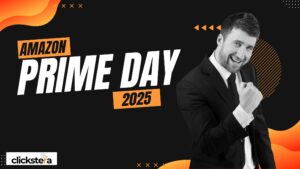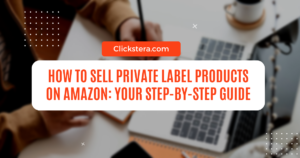In today’s retail landscape, the buyer’s journey is anything but linear. Shoppers jump between product pages, devices, online reviews, and store visits—often in unpredictable ways. At any given moment, your ads could be reaching someone at the very top, middle, or bottom of their decision-making process.
Audience targeting used to mean choosing who to target. Now, it’s just as much about when and how. It’s no longer about adding more audience segments—it’s about understanding how to leverage the ones you already have, across the entire funnel, with more precision.
According to the 2025 State of Retail Media report, nearly 60% of marketers are now using full-funnel strategies to connect with shoppers at every stage of the journey.
So here’s a question we at Clickstera often ask ourselves—and our clients: Are you using your audiences smartly, or are you boxing them into a single stage of the funnel?
Rethinking Segmentation: From Chaos to Clarity
With brands now using an average of seven retail media networks, the number of touchpoints is exploding. While this offers endless opportunities, it also raises the risk of disjointed messaging and missed moments.
61% of marketers in the same report say full-funnel tactics help them maintain message consistency. But consistency doesn’t mean sending the same message to everyone. A one-time buyer doesn’t need the same message as a loyal repeat customer. Someone who left items in their cart isn’t the same as someone who hasn’t engaged in months.
The key? Smarter segmentation. Not by growing your audience lists endlessly—but by using what you already have with more intent and strategy.
Below, we break down how nine types of audiences can be used more thoughtfully across the funnel to not just drive conversions, but also guide shoppers forward.
1. Recent Buyers
Often excluded to avoid wasting impressions—but what if they’re your most valuable asset?
Top of Funnel: Create lookalike audiences using data like timing, product category, or triggers.
Middle: Recommend complementary products or new use cases to drive re-engagement.
Bottom: Send reorder reminders, subscriptions, or loyalty-based offers.
Think retention, not just conversion.
2. Cart Abandoners
Hit with discount after discount… but is price really the issue?
Top: Analyze common abandonment patterns and refine qualification criteria.
Middle: Tackle hesitation with messaging around delivery times, reviews, or returns.
Bottom: Use urgency-driven creatives—limited stock, time-sensitive offers, etc.
Abandonment is feedback. What caused the pause?
3. Loyal Customers & Repeat Buyers
Often underutilized—or ignored to protect margins.
Top: Build high-value lookalikes using loyalty traits.
Middle: Showcase new arrivals, brand stories, or features they’ve never tried.
Bottom: Give exclusive access or reduce frequency to avoid overexposure.
Sometimes, respect means knowing when not to advertise.
4. High-Intent Shoppers
They’re nearly there—don’t blow it with pressure.
Top: Capture early signals like long PDP views to improve prospecting.
Middle: Provide comparisons, social proof, or flexible payment options.
Bottom: Deliver customized offers or reassurance about delivery speed.
The final step is often about trust—not urgency.
5. Ad Engagers & Site Visitors
Clicked your ad? Doesn’t mean they’re ready to convert.
Top: Retarget softly with brand value content or testimonials.
Middle: Share feature highlights and benefit-led storytelling.
Bottom: Only push conversion messages to your most engaged group.
A click is interest—not intent. Let them breathe.
6. Lookalike Audiences
Often used too broadly without meaningful refinement.
Top: Start with brand-building campaigns tailored to likely interests.
Middle: Layer on behaviors like recency or shopping category.
Bottom: Move to conversion ads only when intent signals are clear.
Better lookalikes reflect behavior—not just demos.
7. Seasonal or Promo-Driven Shoppers
Not just bargain hunters—they can become long-term loyalists.
Top: Tease upcoming sales or early access to warm them up.
Middle: Re-target based on previous buying habits—deal type, timing, category.
Bottom: Post-sale, test upsells and loyalty hooks.
Turn peaks into habits, not one-off spikes.
8. Cross-Category Browsers
They’re curious—but unfocused.
Top: Inspire with curated bundles or “frequently bought together” highlights.
Middle: Reinforce product relationships with smart bundles or benefits.
Bottom: Incentivize the cart with bundles based on real-time behavior.
Inspire before you push. Help them see the connection.
9. Lapsed or Inactive Customers
Often hit with a “We miss you” and that’s it.
Top: Exclude unless new behaviors suggest a return.
Middle: Re-engage with what’s new—improved service, new products, faster shipping.
Bottom: Base offers on their previous buying cycle and product preferences.
Don’t remind them they left—show them why to come back.
Final Thoughts: Targeting Is Your Most Strategic Lever
At Clickstera, we believe audience strategy is the foundation of every winning campaign. It’s not just about who you reach—it determines how you show up, what you say, and when you say it.
And in today’s complex retail media environment, precision targeting doesn’t start at the bottom. It starts with thoughtful planning, segmentation, and message sequencing across the full funnel.
Winning teams aren’t necessarily spending more. They’re just building more thoughtful, personalized paths for their audiences—designed around where each shopper is, and what they need next.
That’s how full-funnel media creates real lift. Not just through shiny formats or new ad placements—but through strategy that matches how shoppers actually behave.





